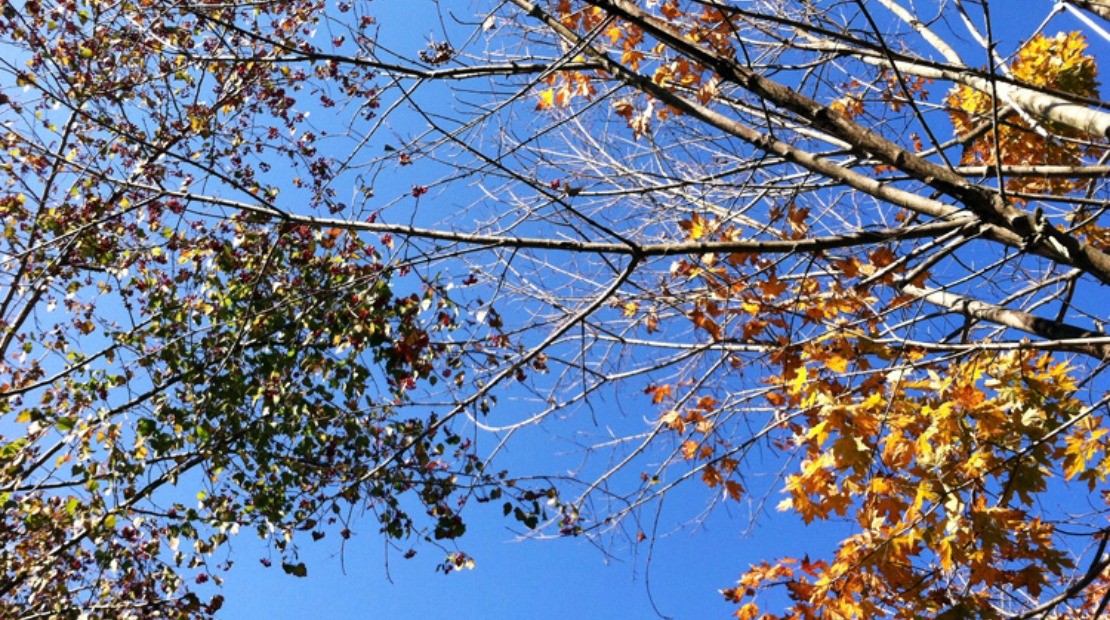
What do you know about Tree Medicine?
Trees are a critical member of ecosystems, providing habitat, stabilizing soil, moderating climate, and filtering air. They produce our most basic need — oxygen — and also provide shade, lumber, and food in the form of nuts, berries, and sap. Most often, we appreciate trees for their beauty, shade on a hot summer’s day, or for their tasty fruit during harvest time, but we often overlook their medicinal properties, which can be found in nearly every part of a tree. The medicinal value of trees such as gingko for improving memory and tea tree as an anti-fungal have been touted far and wide and are now commonly used, but what about peach leaf for nourishing the nervous system or white pine as a source of Vitamin C? Like plants, the medicinal value of trees is extensive, and they have a long history of use in cultures around the world.
If you’re interested in learning more about tree medicine for healthy minds and bodies, rooting and sprouting herbalists herbalists can join us in the Online Introductory Herbal Course, while budding and blossoming herbalists can dive into the Online Intermediate Herbal Course. Bring your natural curiosity and sense of wonder as we explore the medicine and healing trees and plants offer us!
Take the Tree Medicine Quiz!
How much do you know about the medicinal properties of trees? Take this quiz to test your knowledge!

The flowers and dark purple berries of this small tree are beloved by herbalists as remedies for colds and flu symptoms:

The needles of this tree are high in Vitamin C and was used by Native Americans and European settlements to prevent scurvy:

An extract from the leaves of which tree is used to improve memory?

Willow bark contains a compound called salicin, which was used to develop which commercially available pain relief medication?

An extract made from oak bark or oak galls is a treatment for poison ivy.

Which tree is a renowned cardiac tonic?

To make an infused black birch oil for external treatment of muscle inflammation, which part of the black birch tree should be used?

The bark, leaves, and unripened nuts from which tree are one of the few land sources of iodine, which is critical for proper thyroid function?

Along with willow bark, the bark of which tree would make a great salve for pain relief?

Eucalyptus oil, white pine bark and needles, and wild cherry bark are effective expectorants.
Let’s Review the Quiz!
Question:
The flowers and dark purple berries of this small tree are beloved by herbalists as remedies for colds and flu symptoms:
Correct Answer: Black elder
Additional Information: Throughout history, elder has been referred to as “the medicine chest for the country people” due its wide-ranging medicinal actions and ready availability. Elderflower and elderberry are both exceptional allies during colds, flu, and respiratory infections due to their diaphoretic and antiviral actions. Taken at onset of cold or flu symptoms, elderberry can reduce the duration of cold/flu by interfering with virus replication. Find a recipe for elderberry syrup here.
Question:
The needles of this tree are high in Vitamin C and was used by Native Americans and European settlements to prevent scurvy:
Correct Answer: Eastern White Pine
Additional Information: Eastern White Pine was highly valued by Native American tribes. Not only are the pine needles high in Vitamin C, they also contain Vitamin A, and the aromatics in pine are opening to the respiratory system, making pine needle tea a natural remedy for colds. The resin, or pine tar, is a powerful wound healer. Learn about Native American herbal healing practices here.
Question:
An extract from the leaves of which tree is used to improve memory?
Correct Answer: Ginkgo
Additional Information: Ginkgo is truly an ancient tree, as evidenced by fossilized leaves found in 270 million year old rocks! It has long been used in Chinese medicine, and became part of the Western pharmacopeia in the 1700s. Ginkgo improves circulation to the brain, and in fact is one of the best herbs for promoting blood flow and oxygenation through the body. The increase in the availability of oxygen to the brain improves brain function and memory. It is recommended in treating dementia, and may improve memory and thinking abilities in people with Alzheimer’s disease. It is also antioxidant.
Question:
Willow bark contains a compound called salicin, which was used to develop which commercially available pain relief medication?
Correct Answer: Aspirin
Additional Information: Willow bark has been used for pain relief for thousands of years by many different cultures. The inner bark of willow contains salicin, which is converted by the body to salicylic acid. Aspirin was created by isolating salacin and synthesizing salicylic acid, which is an effective pain reliever but is irritating to the stomach (hence the development of buffered aspirin). Chewing willow bark or drinking willow bark tea is much gentler on the stomach.
Question:
An extract made from oak bark or oak galls is a treatment for poison ivy.
Correct Answer: True
Additional Information: It’s true! Oak galls (also called “oak apples”) are formed when parasitic wasps lay eggs in leaf buds. The larva inject chemicals which cause the gall to form, and the larva feeds on the gall tissue. Oak is naturally rich in tannins, and the galls concentrate the tannins. The tannins help reduce the inflammation of a poison ivy reaction, and if prepared in tincture form the alcohol will help disperse the poison ivy oils.
Question:
Which tree is a renowned cardiac tonic?
Correct Answer: Hawthorn
Additional Information: Hawthorn is a supreme cardiac tonic that offers gentle nourishment to the heart. Hawthorn berry, flower and leaf are used to increase blood flow to the heart, strengthen the heart muscles, balance blood pressure, and improve circulation. Gather the flowers in May or the berries in autumn, just be careful of the thorns! Read here for a hawthorn tea recipe.
Question:
To make an infused black birch oil for external treatment of muscle inflammation, which part of the black birch tree should be used?
Correct Answer: Inner bark of small branches
Additional Information: The green inner bark of black birch contains a fragrant oil with a rich wintergreen smell. In fact, this is the oil sold commercially as wintergreen oil because it is easier to harvest and produce from black birch than from the tiny wintergreen plant. This oil contains methyl salicylate, which has pain relieving and anti-inflammatory properties. Since the inner bark on the main trunk of birch trees should not be harvested (this inner bark, or cambium, is the tree’s “circulatory system” and harvesting it will kill the tree) the inner bark of small black birch branches (easy to find on saplings) are ideal for harvesting. Just use a knife or vegetable peeler to scrape the thin bark off these branches, and use this bark to make an infused oil.
Question:
The bark, leaves, and unripened nuts from which tree are one of the few land sources of iodine, which is critical for proper thyroid function?
Correct Answer: Black Walnut
Additional Information: Iodine is found most readily in sea vegetables and is harder to come by on land. Black walnut is one of the few land plants that are rich in iodine (cranberries, potatoes, and navy beans are also good sources). Iodine, which is not synthesized by the body, is critical for the production of thyroid hormone and must be consumed – hence the introduction of iodized salt in the early 1900s.
Question:
Along with willow bark, the bark of which tree would make a great salve for pain relief?
Correct Answer: Cottonwood
Additional Information: Cottonwoods are in the Willow Family (Salicaceae), so it probably comes as no surprise that the buds, bark, and leaves of cottonwood have pain relieving and anti-inflammatory properties. The bark and buds are ideal for extraction in an oil-based salve meant for providing pain relief and healing for wounds, burns, and scrapes. It also helps relieve the pain in sore joints and achy muscles. Herbalist Kiva Rose recommends harvesting the buds “are full but not quite popping, and a drop of resin is clearly visible at the end of each bud.”
Question:
Eucalyptus oil, white pine bark and needles, and wild cherry bark are effective expectorants.
Correct Answer: True
Additional Information: Expectorants help relieve congestion in the lungs by thinning the mucus, making coughing more productive. Each of these trees has a long history of use as an expectorant. Eucalyptus oil and white pine are aromatic, and an eucalyptus steam or white pine tea will help loosen phlegm. Wild cherry bark helps expectoration by getting mucus moving and as an antispasmodic also relieves coughing.
Score your quiz!
0 to 1 correct answers? You are a Rooting Herbalist, your path is just beginning, welcome!
You are just starting out and have taken only a couple steps into your herbal journey. You have used a few herbs like basil and cilantro, adding these culinary herbs to your pasta sauce or salsa. Who knew they can also be used medicinally! Herbalism is a new word in you dictionary, but you are interested in learning more about it and what it means!
1 to 4 correct answers? You are a Sprouting Herbalist!
You are curious about herbs and how to use them for your health, and you often wonder about the plants and weeds that grow in your backyard, but you are unsure how to use them for yourself and family. While you may have tried making your own herbal teas and homemade lotions, you don’t fully understand dosage and formulation. Herbalism might be a new word in your dictionary, but you are definitely eager to jump in and discover this “back to the roots” way of life!
5 to 9 correct answers? You are a Budding Herbalist!
You are truly passionate about herbs and eager to learn more! You have a good understanding of herbs and how to use them for yourself and others. You’ve been studying herbs on your own for some time and may have taken some classes or courses. Your passion rubs off on your family and friends. Herbalism is not just a fad for you, it’s a lifestyle! And your journey is far from over… there’s always more to learn!
10 correct answers? You are a Blossoming Herbalist!
You have a good grasp of herbs and how to use them as medicine. Your library is always expanding with new reading materials and you have been studying herbs since you can remember. Many of your friends and family come to you with questions about their health and wellness, and you are proud to be able to help them. Your passion for herbalism is ever growing andl like so many others with years of experience and education, you are mature enough to recognize that herbalism is a lifelong pursuit… so let the adventure continue!
If you’re interested in learning more about herbalism, rooting and sprouting herbalists can join us in the Online Introductory Herbal Course, while budding and blossoming herbalists can dive into the Online Intermediate Herbal Course.








